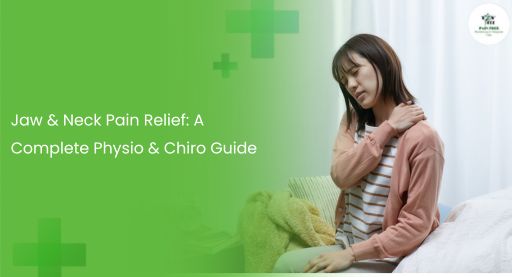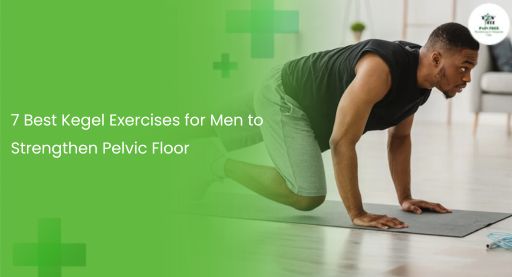Benign Paroxysmal Positional Vertigo
Ever turned your head and suddenly felt like the room was doing somersaults? Yeah, that gut-dropping, dizzying swirl can leave you rattled, confused, and maybe even clinging to the nearest wall. While you might chalk it up to being tired or dehydrated, there’s a medical mouthful behind it Benign Paroxysmal Positional Vertigo, or BPPV for short.
Now, before your brain spirals along with your balance, take a deep breath. BPPV might sound intense (and okay, it feels that way too), but it’s actually one of the most common and treatable causes of dizziness. Let’s dive headfirst gently! into the dizzying world of BPPV and find out what’s really going on in that spinning head of yours.
What Is Benign Paroxysmal Positional Vertigo?
Sounds like a tongue-twister, right? Don’t worry, we’ll break it down:
- Benign – It’s not life-threatening, so there’s a silver lining.
- Paroxysmal – The episodes come on suddenly and briefly.
- Positional – It’s triggered by changes in your head position.
- Vertigo – That dreaded spinning sensation, like the world’s on a merry-go-round and forgot to tell you.
Put it all together? Benign Paroxysmal Positional Vertigo is a condition where specific movements like looking up, rolling over in bed, or tilting your head suddenly make you feel like you’re spinning, even though you’re standing still.
Benign Paroxysmal Positional Vertigo: What’s Really Going On?
To understand BPPV, we’ve got to zoom in on your inner ear, the tiny but mighty balance center of your body. Inside, there are canals filled with fluid and crystals (yep, actual microscopic crystals made of calcium carbonate). These crystals help detect motion and tell your brain which way is up, down, or sideways.
But sometimes, those little crystals go rogue.
When they dislodge and drift into the wrong part of your inner ear, they send faulty signals to your brain. So, while your eyes and muscles say, “We’re steady,” your ears scream, “We’re moving!” Boom vertigo hits.
Symptoms of Benign Paroxysmal Positional Vertigo
You’ll know when BPPV strikes it’s hard to miss. But just in case you’re wondering what to watch out for, here’s a breakdown of the usual suspects:
- Sudden, brief spinning sensation (usually lasts less than a minute)
- Dizziness when turning your head or changing positions
- Nausea or feeling like you’re going to tip over
- Unsteadiness, especially first thing in the morning
- Eyes darting uncontrollably (nystagmus try saying that five times fast!)
Oh, and here’s the kicker: it often shows up out of the blue, no accident, illness, or injury needed. One day you’re fine, the next, the ceiling’s doing cartwheels.
Common Triggers That Might Set Off BPPV
While the exact cause isn’t always clear, there are a few triggers that seem to stir up trouble:
- Rolling over in bed
- Getting out of bed too quickly
- Looking up or down (think tying shoes or reaching for a shelf)
- Sudden head movements
- Trauma to the head (even mild bumps)
- Prolonged bed rest
BPPV is more common in older adults, but it can strike at any age. Women also tend to experience it more frequently than men.
Diagnosing Benign Paroxysmal Positional Vertigo
So, how do you know for sure it’s BPPV and not something more serious? That’s where a quick visit to a healthcare professional comes in. They’ll likely perform something called the Dix-Hallpike maneuver, a simple in-office test that helps trigger symptoms and observe your eye movements.
No scary machines, no invasive procedures, just some strategic head tilting. If your eyes do a little dance and you feel dizzy, it’s probably BPPV.
Managing & Treating BPPV: No, You Don’t Have to Live With It
Good news you can actually treat BPPV without medication or surgery. Yep, really!
1. The Epley Maneuver
This simple head movement sequence helps guide those rogue crystals back where they belong. It’s often done by a physical therapist, chiropractor, or trained physician. Sometimes, just one session can do the trick. Magic? Not quite just smart science.
2. Brandt-Daroff Exercises
If you prefer to tackle it solo, these at-home exercises can help your brain adjust to the abnormal signals over time. They’re repetitive, sure, but they work.
3. Vestibular Rehabilitation
When BPPV becomes a recurring pain in the…head, vestibular therapy can help retrain your brain and improve balance. Think of it as physical therapy, but for your inner GPS system.
Tips to Keep Vertigo at Bay
Once you’ve had a BPPV episode, you’ll do just about anything to avoid a repeat performance. Here’s how to reduce your risk:
- Sleep with your head slightly elevated
- Get out of bed slowly no more ninja moves!
- Avoid sudden head jerks or prolonged tilting
- Don’t sleep on the side that triggers symptoms
- Stay hydrated and well-rested (yes, it matters!)
Remember, while BPPV isn’t dangerous, it sure is annoying so a little prevention goes a long way.
FAQs About Benign Paroxysmal Positional Vertigo
- Can Benign Paroxysmal Positional Vertigo go away on its own?
Yes! Many cases resolve spontaneously within a few weeks. However, treatments like the Epley maneuver can speed up recovery dramatically. - Is BPPV a sign of something more serious?
Usually, no. It’s “benign” for a reason. But if your dizziness lasts a long time or comes with other symptoms (like hearing loss or severe headache), definitely see a doctor. - Can BPPV come back after treatment?
Unfortunately, yes—it can recur. Some people experience repeat episodes months or even years later. Thankfully, the same maneuvers that worked the first time can help again. - Is it safe to drive with a BPPV?
If you’re actively dizzy, it’s best to stay off the road. Once your symptoms are under control, and you’re not experiencing sudden vertigo, driving is generally safe. - Can I still exercise with BPPV?
Light exercise is usually fine, but avoid activities that involve fast head movements (like aerobics or certain yoga poses) until you’ve recovered.
Conclusion
Benign Paroxysmal Positional Vertigo might sound like something straight out of a medical drama, but in reality, it’s a common (and treatable) condition that throws your balance off-kilter without much warning. From rogue ear crystals to swirling ceilings, the experience can be unsettling but it doesn’t have to control your life.
With the right guidance, a few head maneuvers, and some patience, you’ll find your balance again literally. So, next time the world starts spinning? Don’t panic. You’ve got this.











